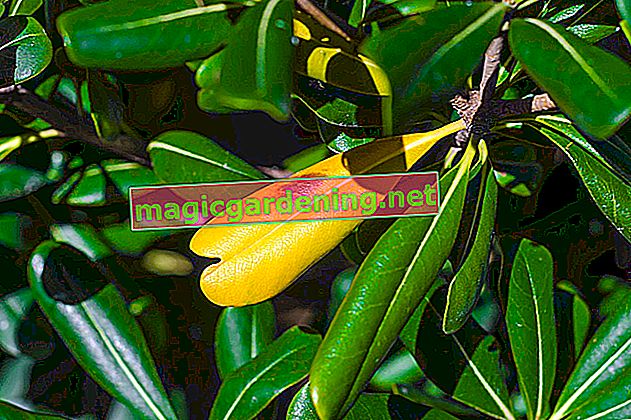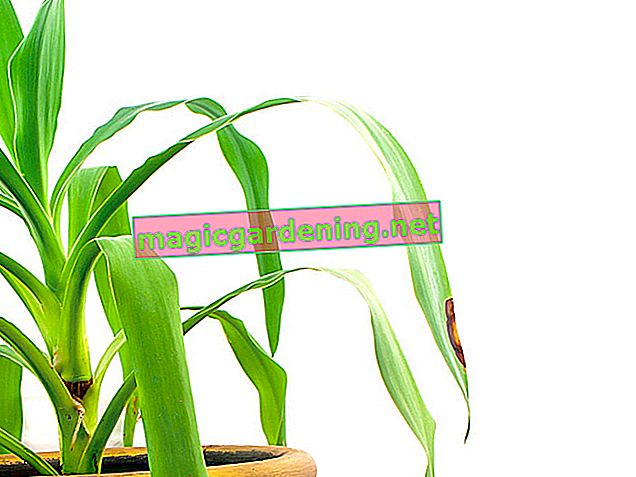
Some leaf fall is normal
Similar to the palm trees, the trunk of the dragon tree is formed by new leaves appearing at the top of the plant and leaves dying on the bottom. So don't worry too much if leaves occasionally turn yellow at the lower end of the leaf crown and hang limply at first and then fall off completely. This is part of the dragon tree's natural growth process and the leaves can simply be disposed of as soon as they have fallen off.
also read
- The dragon tree lets the leaves hang - what now?
- Brown leaves on the dragon tree - what to do?
- The dragon tree gets yellow leaves - what to do?
Beware of sunburn
On the other hand, the situation is more dramatic if a large number of leaves suddenly turn yellow or develop large-format brown spots. You should then consider whether you have moved the dragon tree to a location that is too sunny. Many plant lovers want to do something good for their indoor plants in summer and put them on the balcony. In certain cases this may even be possible, but a dragon tree should only then be gradually accustomed to the weather conditions outdoors and the stronger sunlight.
Avoid strong temperature fluctuations
Dragon trees naturally grow in places with only relatively small temperature fluctuations. Accordingly, they should also be set up in the house so that the temperature is relatively constant all year round. Many locations directly above a radiator and close to the window are rather poorly suited for the dragon tree, as it can then lose its leaves due to the dry heating air and the temperature fluctuations caused by the sun. If you absolutely want to place a dragon tree directly on a bright window, then you should at least choose one with patterned or rather reddish leaves. The less green a dragon tree has in its leaves, the more sun it can withstand. This is related to the chlorophyll content of the leaves.
Notice stem rot in good time
When the leaves begin to fall off from the tip, hurry. Then the upper end of the trunk is often rotten due to an illness or as a result of care errors. The stem rot is usually accompanied by an unpleasant fishy odor. If the top of the trunk is affected by the rot, a radical pruning may help. In the case of root rot, an attempt can be made to move the plant to a new beginning as a cutting.
Tips
The most common reason for massive leaf loss in the dragon tree is, in addition to classic sunburn, root and stem rot. This can be prevented with an economical watering behavior, a suitable substrate or with care as hydroponics.








